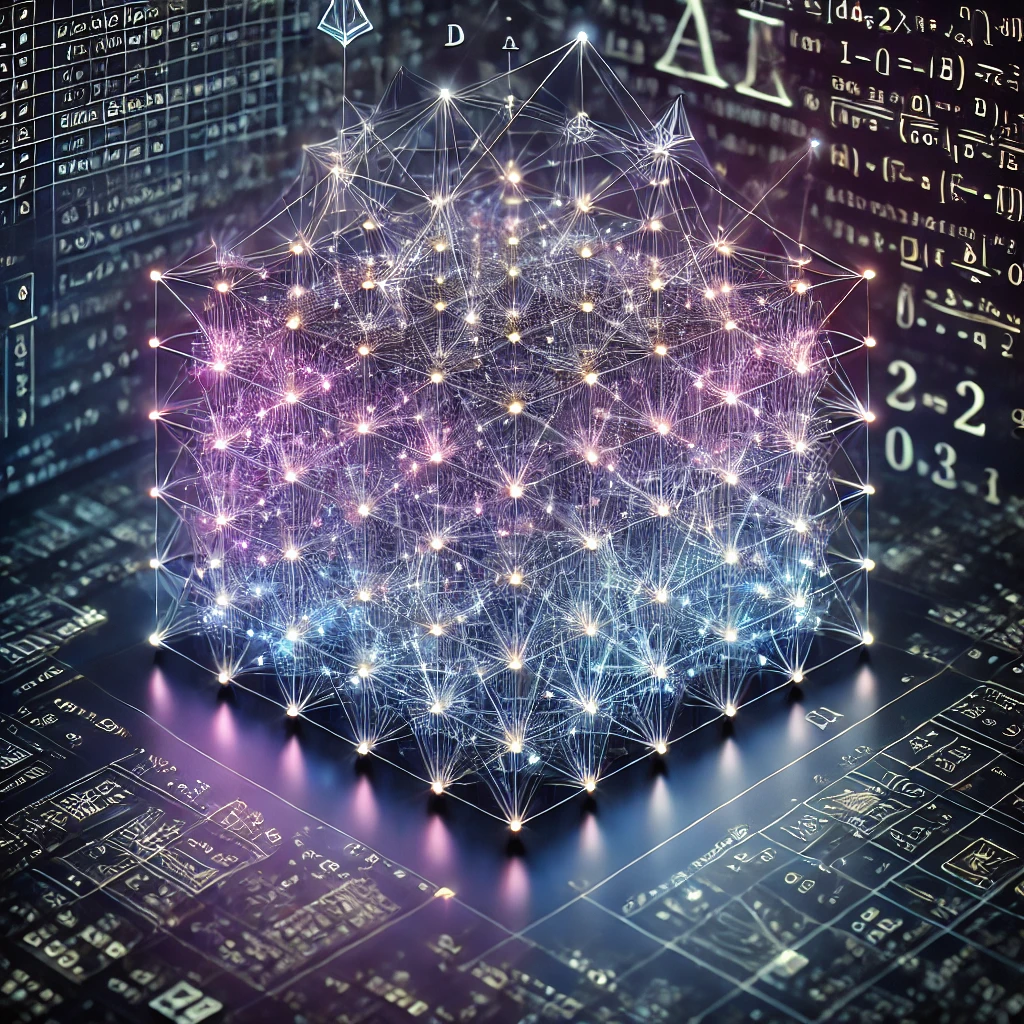Have you ever wondered how an app recommends the next movie you’ll love, how a self-driving car recognizes pedestrians, or how a virtual assistant understands your voice?
Behind this “magic” lies something far less mysterious than it seems: mathematics. More specifically, linear algebra — that same subject from school that deals with vectors and matrices.
By understanding this foundation, we realize that Artificial Intelligence (AI) is not some kind of technological black magic, but rather an intelligent application of mathematical concepts, repeated millions of times, to find patterns and make predictions.
Machine Learning in a Nutshell
Simply put, Machine Learning is when a computer learns patterns from examples. We provide data (images, texts, numbers, sounds, etc.), the algorithm tries to understand hidden relationships, and after being trained, it can make predictions or classifications on its own.
In practice, this data is organized in tables:
- Rows = examples (each customer, each image, each measurement)
- Columns = characteristics of each example (age, color, weight, words, pixels)
Mathematically, this table is a matrix. Learning, in essence, means finding the set of numbers (called weights) that, when multiplied by this matrix, produce a result as close as possible to the expected outcome.
💡 Mental analogy: if you’ve ever used spreadsheets to multiply data by coefficients to reach a total, you’ve already done something similar to what a Machine Learning algorithm does.
Deep Learning: Layers Upon Layers of Math
Deep Learning is an evolution of Machine Learning that uses artificial neural networks. Despite the name, there are no biological neurons involved — just multiple layers of interconnected mathematical operations.
The basic functioning of a layer is:
- Multiply the input data by a matrix of weights
- Add a bias vector (adjustments)
- Apply an activation function (for example, ReLU or sigmoid) to introduce non-linearity
By connecting dozens or hundreds of these layers, the model can detect extremely complex patterns — such as identifying tumors in medical scans, translating text with context, or even creating realistic images.
Why Everything Revolves Around Matrices
Whether it’s a simple model or a deep neural network, everything boils down to two elements:
- Vectors: lists of numbers (can represent a flattened image, a student’s grades, or a user’s preferences)
- Matrices: organized sets of vectors (tables of numbers)
The most common operations include:
- Matrix multiplication (combining data with weights)
- Vector addition (adjusting results)
- Transposition (swapping rows and columns to reorganize data)
These calculations are repeated millions or even billions of times during training. That’s why graphics cards (GPUs) — originally designed for gaming — are so widely used in AI: they’re built to perform matrix operations massively in parallel and at high speed.
Practical Example: Predicting a House Price
Imagine we want to create a model to predict the price of a house. We have a table with:
- Size (m²)
- Number of rooms
- Location (converted into numbers)
This table becomes a data matrix. The algorithm multiplies this matrix by a weight matrix, adds the bias, and gets a prediction. During training, it adjusts these weights so that the error between the prediction and the real value becomes smaller and smaller.
📌 It’s like tuning an instrument: you make small adjustments until the sound (in this case, the prediction) gets close to ideal.
Beyond the Basics: AI in Practice
Although the mathematical core is “just” matrix multiplication and addition, what’s built on top is remarkable:
- Speech recognition: transforming sound waves into numeric vectors and identifying speech patterns
- Computer vision: breaking images into pixel matrices and finding visual patterns
- Natural language processing: representing words as vectors (word embeddings) and manipulating these representations to translate, summarize, or answer questions
In all these cases, linear algebra serves as the universal language that computers understand.
Conclusion
As advanced as they may seem, Machine Learning and Deep Learning are, at their core, matrix multiplication machines — they just do it on a massive scale and with intelligent adjustments.
Understanding this mathematical foundation helps us demystify artificial intelligence and see that, behind the innovation, there’s much more calculation and logic than magic.

